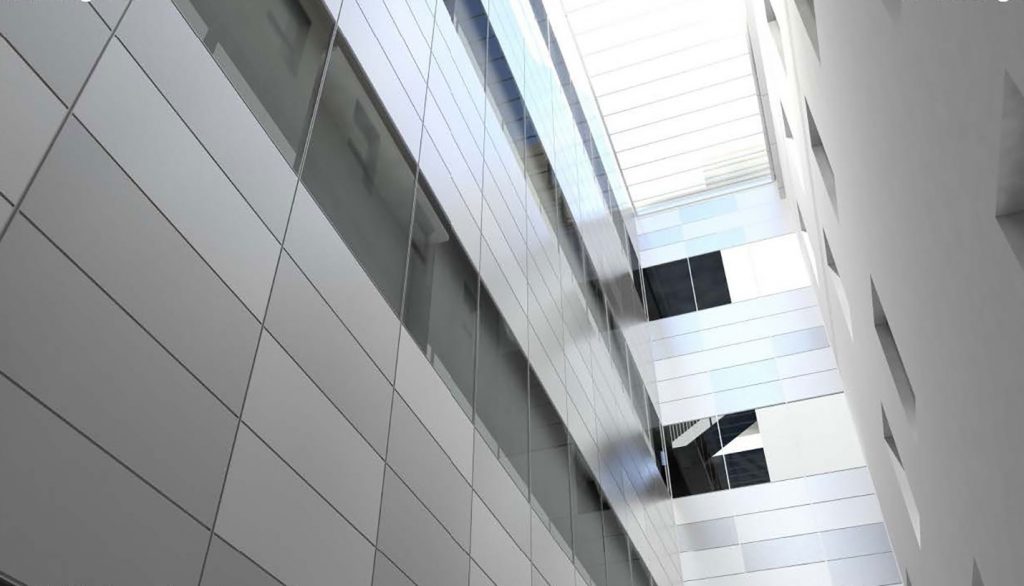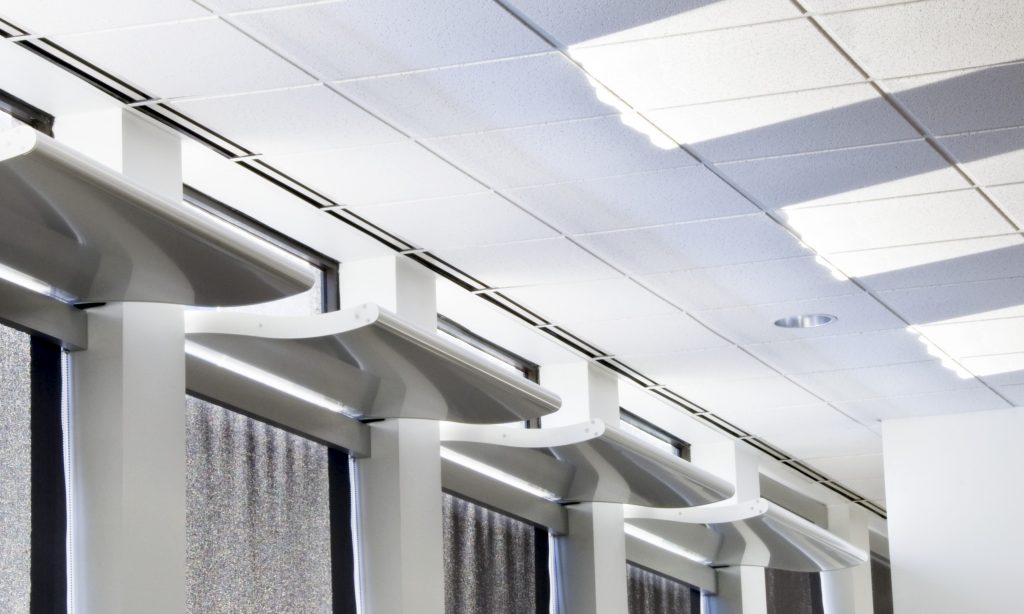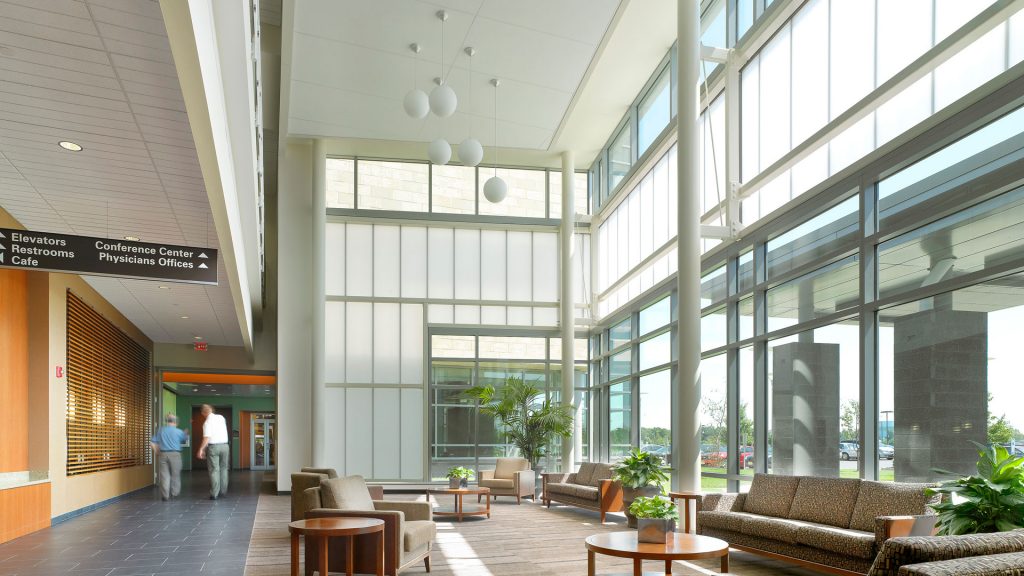
Glare is all about contrast and is caused by unequal light distribution
Types of Glare
Disability glare
When the eye is confronted by headlights from oncoming automobiles or direct sunlight, it can result in a nearly complete lack of vision.
Discomfort glare
A sensation of annoyance caused by an area of brightness in the eyes’ field of view, such as a bright lamp off to the side of a work area.
Not controlling glare is one of the most common failures of daylighting systems. Call us today for a free phone consultation at 1.866.759.7732
Controlling Glare
Spaces without glare control are uncomfortable and often the space cannot be used. Product selection and design are essential for glare control and for good daylighting. Fortunately, there are several options to deal with glare.
Light Shelves
Horizontal daylight redirection devices are often called light shelves and take incoming direct beam sunlight and redirect it, generally onto the ceiling of a space. These devices serve two functions: glare control, where direct sun is redirected away from the eyes of occupants, and daylight penetration, where sunlight is distributed deeper into a space that would not be allowed otherwise.
Clerestories

Allow daylight penetration high in a space. Windows located high in a wall or in roof monitors or clerestories will result in deeper light penetration and reduce the likelihood of excessive brightness.
Light Wells

The light well is as important to the efficiency of the skylight as is the glazing material. Light wells are a primary component of skylighting systems and bring the light through the roof and ceiling structure and simultaneously provide a means for controlling the incoming daylight before it enters the main space. A light well is similar to the housing of an electric light fixture. It is designed to distribute the light and to shield the viewer from an overly bright light source.
Light Well Considerations
- The shallower a light well is relative to its width, the less light is transmitted.
- Splaying the light well, so the bottom of the light well is wider than the top, transmits more light than a light well with vertical sides.
- For a given geometry, a light well which is painted white will have the highest efficiency.
Other Considerations
Diffuse Light
Currently, most acrylic and polycarbonate glazings use pigments in their “white” products to diffuse light. Since these pigments also absorb visible light, generally the higher the visible transmission, the less diffusing it is.
Thus, “high white” acrylic, with a high Tvis is less diffusing than a “medium white” with lower transmission. Bronze and gray acrylics do not follow this pattern, and usually have poor diffusion even at lower transmission values.
There are clear plastic products formed with a “prismatic” surface that are both highly diffusing and have very high Tvis. These are similar to the prismatic lenses used on light fixtures. Extruded double-walled plastics can also create a diffusing pattern.
Distribution
When skylights are provided in order to create uniform lighting in large open spaces, careful attention to spacing is important. For the same total skylight area, the tradeoff is typically between large skylights far apart versus smaller skylights arranged closely together.
Large, widely spaced skylights may produce bright conditions under the skylights and relatively dark conditions in between. This results in uneven light distribution, reduced energy savings, and possible glare problems.
Small, closely spaced skylights, on the other hand, will provide more uniform lighting conditions and greater energy savings, but will be more costly to install.
The general rule of thumb is to space skylights at 1.0 to 1.5 times ceiling height (center-to-center in both directions). This assumes a highly diffusing glazing and a modest depth for light wells. Actual designs can vary considerably.
Baffles
Baffles may be used inside the light well to shield the eye from the direct beam sunlight entering the skylight and to further disperse the light into the space.
Resources
The 2012 IECC code recognized the importance of daylighting without glare and provided a mandatory measure requirement of a 90% minimum Haze per ASTM D1003 for all fenestration products.
Case Study | Anchor Center for the Blind
2550 Roslyn St
Denver, CO 80238
Problem:

The architect on this project wanted an indirect light for the long hallways and different areas where windows could not be installed. At first glance you may wonder why you would want daylighting for a facility that caters to the blind. Keep in mind people that are blind don’t always see complete black. In fact bright daylighting can help them see better, plus the benefits of natural daylighting benefit us all, including faculty and visitors.
Solution:
The solution was to create clerestories above eye level and allow the light to strike the walls and reflect its way into the interior. Additionally, the architect wanted a continuous panel without obstructions across the entire exterior of the building. We were able to deliver exactly that, even though the manufacturer thought it could not be done.
This building was wood frame construction and had many changes happening to the design and plans even as it was being built. We were able to have product shipped to the site, cut to rough lengths, and then we were able to adjust to the changing conditions of the building and site-build the wall lites. Hindsight proved our planning to be correct as the opening sizes and other details did change from when we placed the order, but there was no costs or delays waiting for those changes to take place in a factory.









